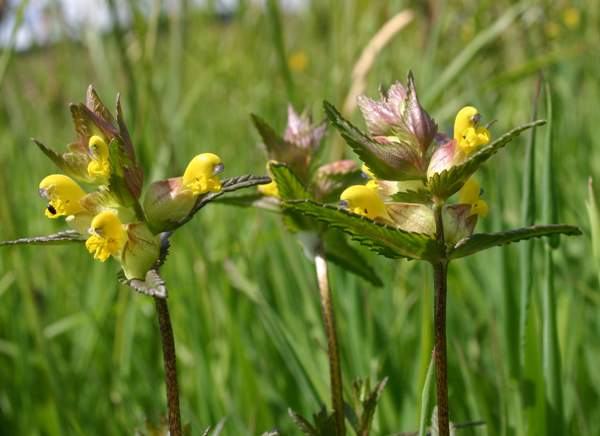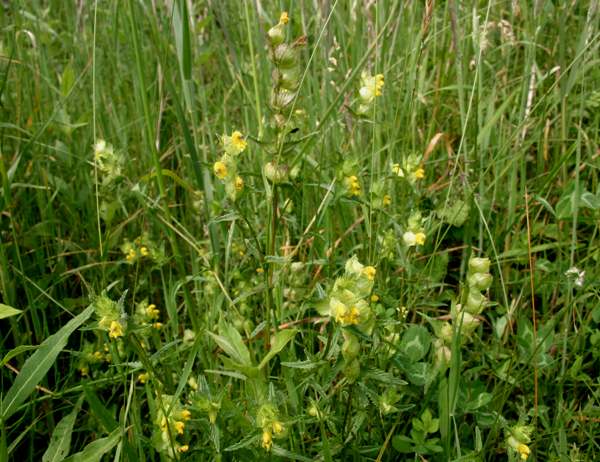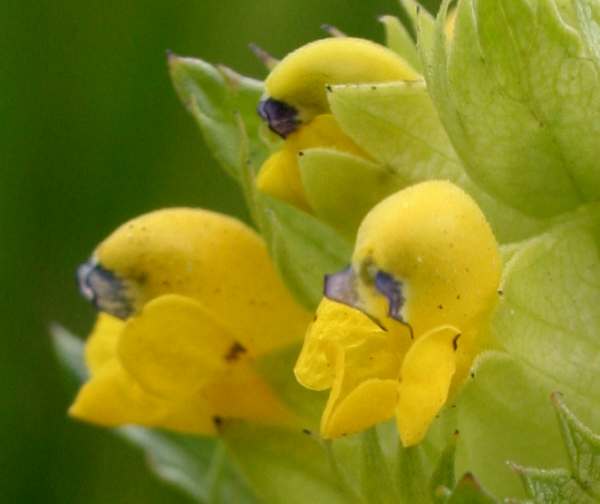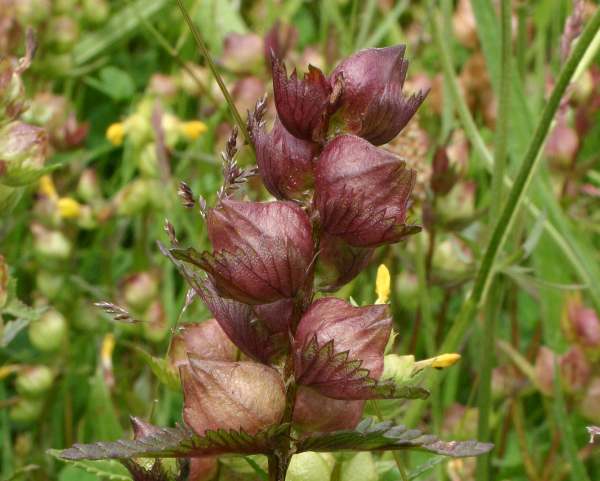Trees Birds Mammals Fish Amphibians Reptiles
Wild Algarve
Bookshop
Rhinanthus minor - Yellow Rattle
Phylum: Magnoliophyta - Class: Equisetopsida - Order: Lamiales - Family: Orobanchaceae

Description
Yellow Rattle is an annual, usually growing to between 20 and 45cm in height. Its opposite, simple leaves have serrated margins and deep dark-green veins. The yellow tube-like flowers, which protrude from an inflated green calyx, are borne in a terminal raceme. A distinctive feature of this grassland wildflower in autumn is the large dry fruit capsule inside which the seeds rattle in the breeze.
Distribution
This plant is widespread throughout Britain and Ireland, but it does not tolerate the application of fertilisers and other modern farming chemicals.
Habitat
Rhinanthus minor grows in undisturbed and unimproved grasslands and is, therefore, an excellent indicator that other special plants may be present - in particular wild orchids.

Blooming times
From May to September is the normal flowering period for Yellow Rattle in Britain and Ireland.
Etymology
The genus name Rhinanthus comes from Greek and means nose flower - a reference to the shape of the upper lip of the flower. The specific epithet minor means smaller or lesser. (There are 28 Rhinanthus species in Europe and several more elsewhere in the world.)
When the wind blows in the autumn, the seeds rattle inside the sepal tubes (seed pods) of this strange plant of grassy slopes and wildflower meadows; hence its common name. It has also been accorded other names that refer to the rattling of the seeds including 'Pots and Pans' and 'Hay Rattle'.

Yellow Rattle is hemi-parasitic and depends on other nearby plants, notably of the families Poaceae (grasses) and Fabaceae (peas, vetches and relatives), feeding on their roots to gain some of its nutrients.

Pictured above are the seedheads of Yellow-rattle. When blown by the wind the seeds inside make a rattling noise.
The plants shown on this page were photographed at Kenfig National Nature Reserve in South Wales in June and July.
Sue Parker's latest ebook is a revised and enlarged edition of Wild Orchids in The Burren. Full details here...
Buy it for just £5.95 on Amazon...
Sue Parker's new ebook is a comprehensive and fully revised edition of her acclaimed field guide to the Wild Orchids of Wales. Full details here...
Buy it for just £5.95 on Amazon...
Please Help Us: If you have found this information interesting and useful, please consider helping to keep First Nature online by making a small donation towards the web hosting and internet costs.
Any donations over and above the essential running costs will help support the conservation work of Plantlife, the Rivers Trust and charitable botanic gardens - as do author royalties and publisher proceeds from books by Pat and Sue.